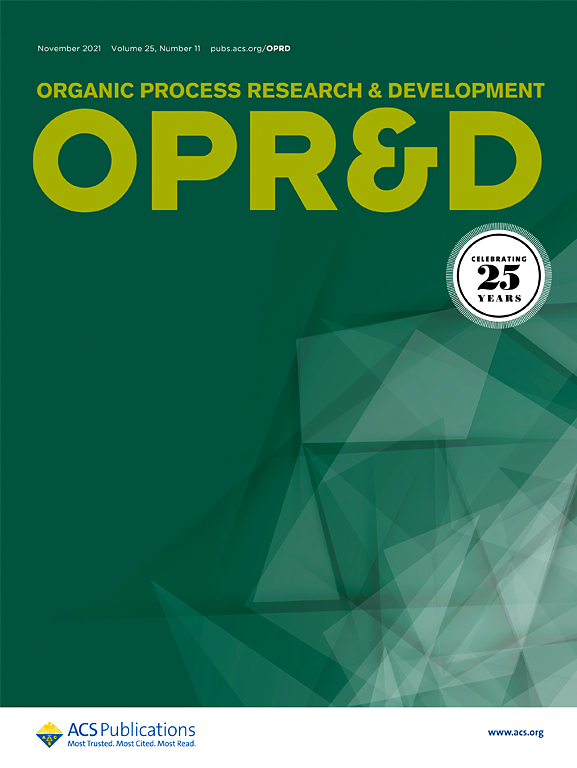Manufacturing Process for HIF-2α Inhibitor Casdatifan (AB521): Creating Five Chiral Centers with High Stereoselectivity
IF 3.5
3区 化学
Q2 CHEMISTRY, APPLIED
引用次数: 0
Abstract
A manufacturing process for HIF-2α inhibitor casdatifan suitable on a multikilogram scale and beyond is presented. Key features include the convergent coupling of two fragments (A7 and B4) of similar complexity, followed by diastereoselective olefin hydrogenation to introduce the tetralin central C-8 chiral center of intermediate C4. Double electrophilic alpha fluorination of the diketone C4, followed by double Noyori transfer hydrogenation enables the introduction of the additional four chiral centers to produce the penultimate diol intermediate C6. Chemo and stereoselective deoxyfluorination of one of the two benzylic alcohols produces casdatifan.

HIF-2α抑制剂Casdatifan (AB521)的制备工艺:具有高立体选择性的五个手性中心
介绍了一种适用于多公斤级及以上的HIF-2α抑制剂卡达替凡的生产工艺。主要特征包括两个复杂程度相似的片段(A7和B4)的会聚偶联,然后是非对映选择性烯烃加氢,引入中间C4的四氢化中心C-8手性中心。二酮C4的双亲电α氟化,接着是双野依转移氢化,使引入额外的四个手性中心,产生第二个二醇中间体C6。化学和立体选择性脱氧氟化的两种苯基醇之一产生卡地凡。
本文章由计算机程序翻译,如有差异,请以英文原文为准。
求助全文
约1分钟内获得全文
求助全文
来源期刊
CiteScore
6.90
自引率
14.70%
发文量
251
审稿时长
2 months
期刊介绍:
The journal Organic Process Research & Development serves as a communication tool between industrial chemists and chemists working in universities and research institutes. As such, it reports original work from the broad field of industrial process chemistry but also presents academic results that are relevant, or potentially relevant, to industrial applications. Process chemistry is the science that enables the safe, environmentally benign and ultimately economical manufacturing of organic compounds that are required in larger amounts to help address the needs of society. Consequently, the Journal encompasses every aspect of organic chemistry, including all aspects of catalysis, synthetic methodology development and synthetic strategy exploration, but also includes aspects from analytical and solid-state chemistry and chemical engineering, such as work-up tools,process safety, or flow-chemistry. The goal of development and optimization of chemical reactions and processes is their transfer to a larger scale; original work describing such studies and the actual implementation on scale is highly relevant to the journal. However, studies on new developments from either industry, research institutes or academia that have not yet been demonstrated on scale, but where an industrial utility can be expected and where the study has addressed important prerequisites for a scale-up and has given confidence into the reliability and practicality of the chemistry, also serve the mission of OPR&D as a communication tool between the different contributors to the field.

 求助内容:
求助内容: 应助结果提醒方式:
应助结果提醒方式:


